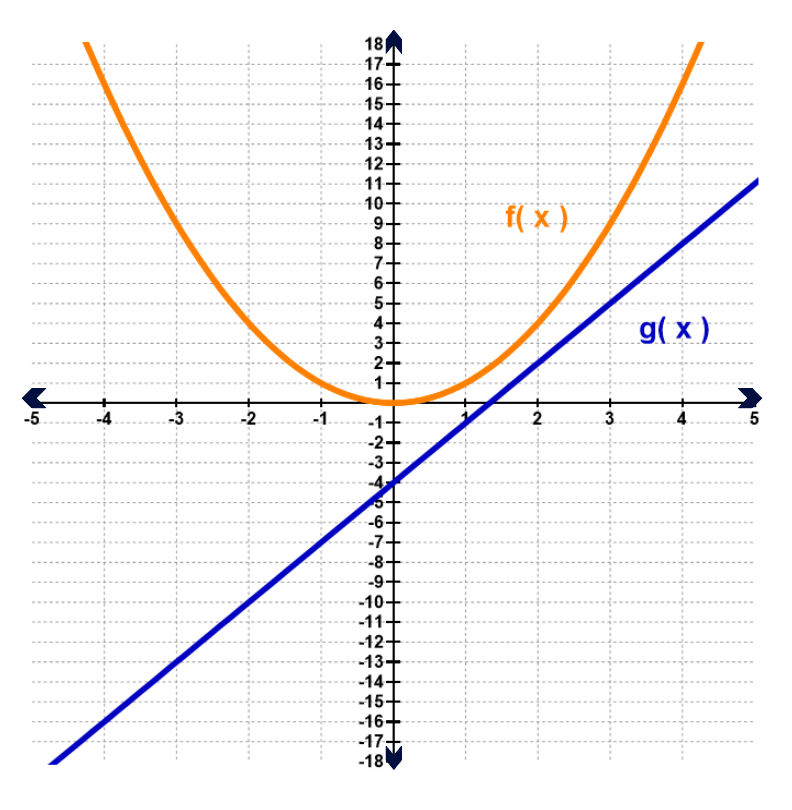Table of contents
- 0. Review of Algebra4h 16m
- 1. Equations & Inequalities3h 18m
- 2. Graphs of Equations43m
- 3. Functions2h 17m
- 4. Polynomial Functions1h 44m
- 5. Rational Functions1h 23m
- 6. Exponential & Logarithmic Functions2h 28m
- 7. Systems of Equations & Matrices4h 6m
- 8. Conic Sections2h 23m
- 9. Sequences, Series, & Induction1h 19m
- 10. Combinatorics & Probability1h 45m
3. Functions
Intro to Functions & Their Graphs
Problem 33b
Textbook Question
Use the graph to evaluate each expression. See Example 3(a). (ƒ-g)(1) 
 Verified step by step guidance
Verified step by step guidance1
Identify the functions f(x) and g(x) from the graph.
Locate the point where x = 1 on the x-axis.
Find the value of f(1) by looking at the y-coordinate of the point on the f(x) curve at x = 1.
Find the value of g(1) by looking at the y-coordinate of the point on the g(x) line at x = 1.
Calculate (f-g)(1) by subtracting g(1) from f(1).
Recommended similar problem, with video answer:
 Verified Solution
Verified SolutionThis video solution was recommended by our tutors as helpful for the problem above
Video duration:
3mPlay a video:
Was this helpful?
Key Concepts
Here are the essential concepts you must grasp in order to answer the question correctly.
Function Evaluation
Function evaluation involves substituting a specific input value into a function to determine its output. In this case, evaluating (f-g)(1) requires finding the values of f(1) and g(1) from the graph, and then calculating the difference between these two outputs.
Recommended video:

Evaluating Composed Functions
Graph Interpretation
Interpreting graphs is essential for understanding the behavior of functions visually. The graph shows two functions, f(x) and g(x), where f(x) is a quadratic function and g(x) is a linear function. Observing their intersection points and values at specific x-coordinates helps in evaluating expressions involving these functions.
Recommended video:
Guided course

Graphs and Coordinates - Example
Difference of Functions
The difference of functions, denoted as (f-g)(x), represents a new function created by subtracting the output of g(x) from f(x) for any input x. This concept is crucial for solving the problem, as it requires calculating the values of f and g at x=1 and then finding their difference to evaluate (f-g)(1).
Recommended video:

Function Composition

 5:2m
5:2mWatch next
Master Relations and Functions with a bite sized video explanation from Nick Kaneko
Start learningRelated Videos
Related Practice






